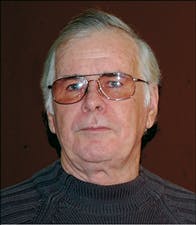Depending on fixture design, MADE freelance writer ED SULLIVAN asserts that off-the-shelf light engines for SSL product developments may be inefficient and create a production bottleneck.
As LED lighting products continue to proliferate, some LED lighting manufacturers compromise the performance of their fixtures due to industry-wide efforts aimed at the development of standard specifications for LED light engines (LEs). Ramifications of an off-the-shelf modular LE selection could include unsatisfactory light output, poor efficacy (lm/w), increased assembly time and costs, as well as delivery delays and other problems that can be avoided. Such commodity LEs can be perceived to be a standardized product that provides ready availability and cost savings, but product developers should scrutinize the LE specification decision to ensure optimum end products.
Interested in more articles & announcements on LED light engines?
The fact that many LEs are produced in high volume doesn't necessarily make them the best value. Nor should they necessarily be the standard approach to an LE for lighting companies. In many instances, lighting manufacturers need design latitude in terms of sizes, shapes, mounting hole locations, as well as light output and color temperature that comprise their product's value proposition.
Flexibility in fixture dimensions can be problematic when using commodity LEs. If a lighting manufacturer has a market for LED fixtures that are longer or wider than usual, they may have to improvise multiple LE modules in order to power the fixture, and that usually means more costly, time-consuming assembly. The finished fixture's efficacy or light quality may suffer including uniformity issues that may dissatisfy end users.
Conversely, custom LEs are expressly designed and manufactured to fit the lighting output and size requirements of specific fixtures. Such a result is accomplished by the LE design engineers interacting directly with fixture manufacturers on each product: understanding their goals, what the fixture looks like, and light output targets. These engineers also determine how many LEDs are optimum, or if a bigger panel is required.
Lighting manufacturers may be better off evaluating the use of customized LEs for their fixtures. Light engine manufacturers, like MADE (Manufacturing And Design Electronics), will take the conceptual product information, lay out an LE board, build it, and then deliver samples to the lighting company for them to test in their fixture. All of this is done efficiently - often satisfying the customer's true requirements with the first samples.
When lighting companies simply adopt an available commodity LE, in many instances that equates to ignoring the lighting objectives and design targets for the conceived fixture. Lighting companies should have efficacy targets and light output targets for the fixtures they are creating. Once these are determined, the LE manufacturer can make some pretty good assumptions on the efficiency of the light output and the light transfer from the light source to the fixture level. The experience of the LE specialists enables them to develop the right solution so fixture makers hit their design targets and get the required certifications more easily.
Settling for a commodity module can often result in discovery that a project did not quite hit the identified targets. Such an occurrence might result in adaptations such as trying an increased drive current, which then may not achieve the efficacy goal.
Cost is usually a dominant consideration when a light fixture manufacturer selects a standard LE. But module costs can be misleading. Many manufacturers assume that they couldn't possibly buy a custom board for a competitive price. Yet it is entirely possible for a custom light engine company to produce a board for a highly competitive price, or perhaps for even less.
Still, the bigger issue may be system design and manufacturing costs. One of the major advantages of a custom LE is that it is easier to integrate into the light fixture, requiring fewer connections during assembly and resulting in time and labor savings. Moreover, there are other cost options that the custom LE manufacturer can recommend, such as matching the best LEDs to an application. The right choices can reduce power consumption and improve performance even if more-expensive or greater numbers of LEDs are used.
LE availability is another significant consideration. Lighting manufacturers may run into supply problems when a commodity LE manufacturer can't meet delivery requirements because a very large customer has just taken the entire inventory. Smaller custom LE makers are usually able to minimize delivery problems because they design and plan with their customers ahead of time, which results in consistent, dependable deliveries.
ED SULLIVANis a freelance writer working with MADE (Manufacturing & Design Electronics; www.made-usa.net).






